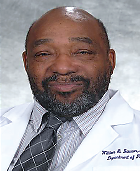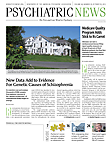he shooting of 17-year-old Trayvon Martin by George Zimmerman in Florida in February generated national outrage, headlines, protests, and demonstrations, particularly in the African-American community. Martin was an African-American high school student carrying no weapon. Zimmerman was a 28-year-old mixed-race Hispanic who was the neighborhood-watch coordinator in the gated community where Martin was temporarily staying.
What happened is a subject of dispute, but the result was that Zimmerman shot and killed Martin. The concern among many African Americans was that he was shot because he was a black male and thus presumed to be dangerous. The media reports and public opinion that followed split heavily along racial lines—many African Americans thought the shooter should be arrested and prosecuted, while the larger community felt the shooter should not be. In fact many thought he was justified in defending himself from someone he thought was a dangerous assailant.
Polls released soon after Zimmerman’s trial, in which he was acquitted of manslaughter, revealed a dramatic racial gap in public opinion about the case, with racial disparities on issues ranging from reaction to the verdict to the need for a national discussion on race. According to a Pew Research Center poll, 86 percent of African Americans expressed dissatisfaction with the verdict, compared with 30 percent of whites. A Washington Post/ABC News poll reported a similar finding, with just 9 percent of blacks approving of Zimmerman’s acquittal, compared with 51 percent of whites. The Washington Post/ABC News data also reported that 87 percent of blacks said the shooting was unjustified; only 33 percent of whites held that view.
Many had assumed that the country was now “postracial” because, among other observations, an African American had been elected president. Nevertheless, this issue, as well as the arrest of Harvard University professor Henry Louis Gates Jr., by local police after he had arrived late at night to his home after an overseas trip, showed deep differences in racial views.
These incidents are consistent with a long-held perception that the African-American male is potentially dangerous and violent. This perception has implications not only in isolated interpersonal contacts but may explain many racial disparities in health care that impact the larger society.
In one of my first research projects after my residency, I decided to examine race as a factor in inpatient violence. I found that African Americans in a Veterans Administration hospital were significantly less violent than white patients. Yet the staff and many faculty continued to say that they believed African-American patients were more likely to be violent.
Subsequent studies have shown why African-American patients may be less violent. Staff apparently are less likely to tolerate violent behavior from these patients, and African-American patients, particularly males, are more likely to be placed in seclusion and restraint, receive different medications, get higher doses of medication, and be given antipsychotics.
The literature is full of instances in which African Americans, particularly men, receive differing, often more-punitive and less-optimistic treatments. There is a greater likelihood of use of emergency room visits, hospitalizations, and involuntary admissions rather than use of evidence-based support programs or regularly scheduled clinic visits.
The disparities become especially apparent with diagnosis. African-American males are far more likely to receive a diagnosis of schizophrenia, often at the expense of mood disorders and posttraumatic stress disorder. As a result, the excessive antipsychotic usage and hospitalizations appear justified.
The overdiagnosis has persisted despite the use of more empirically based diagnostic criteria. In a recent study in the Archives of General Psychiatry, we showed that the overdiagnosis occurred despite three levels of diagnostic screening. Moreover, the overdiagnosis was more likely in African Americans than in any other ethnic or racial group. In a provocative book, The Protest Psychosis, Jonathan Metzl makes the case that the overdiagnosis of schizophrenia in African-American males is a recent phenomenon, emerging out of the civil-rights era of the 1960s, when schizophrenia increasingly became a disorder of violent black men. The schizophrenia diagnosis apparently was a handy way of dealing with black activists who were often sent to psychiatric hospitals and subjected to involuntary psychiatric treatment. Whatever their actual mental status on admission to psychiatric hospitals, forced treatment almost certainly led to mental deterioration over the course of their hospitalization and after release.
The perception of African-American men as violent may also account for a paradox. Multiple studies have shown that they tend to be slow metabolizers of most antipsychotic medications. Thus, plasma levels tend to be higher with usual dosing, suggesting the need for less medication. Yet African Americans, especially males, end up receiving higher and more frequent dosing. Medication dosing seems to be driven not by rational pharmacotherapy but by skin color and perceived ethnicity.
The correctional system is another way in which these disparities are manifest. There has been a 290 percent increase in the population of U.S. jails and prisons in the past 30 years. More than half of this population are minorities, and African-American men in particular. In addition juvenile African Americans are more likely to be placed in correction facilities, while youth of other ethnic groups are more likely to be referred for mental health treatment.
Two key factors have increased the U.S. incarceration rate: the war on drugs and deinstitutionalization. The drug war increased incarceration of black men, partially because penalties related to crack cocaine, which was more likely than powdered cocaine to be used by minorities and the poor, were more severe—often draconian.
With such a large population of African-American men incarcerated, the consequence is that many receive suboptimal treatment and do not have ready access to care.
The Trayvon Martin case is a reminder that in “postracial” America, black men are still being viewed as dangerous and violent. This perception has shifted resources from treatment to punishment and limited the options for recovery from mental and substance abuse disorders in a large segment of our population. ■

